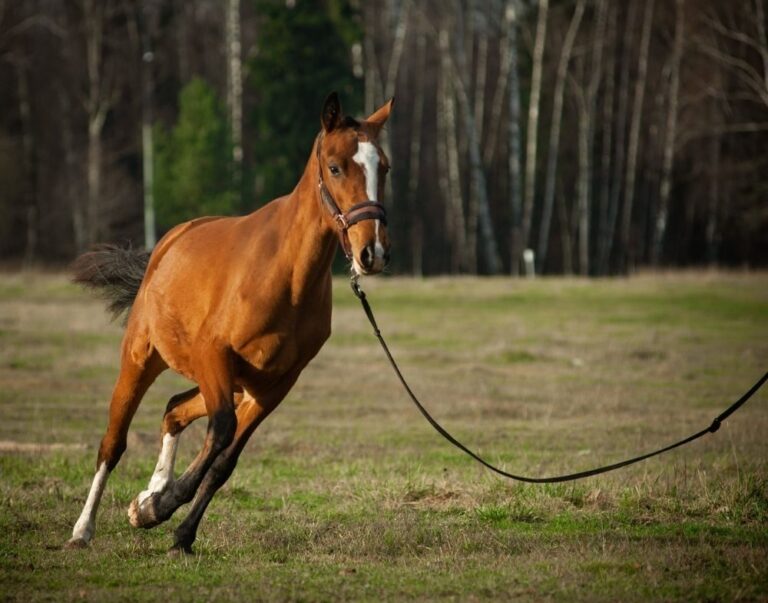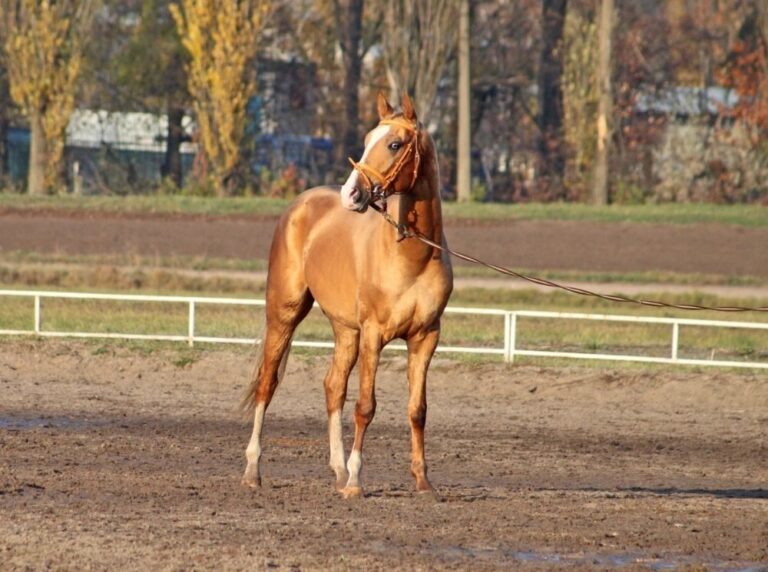
In This Article:
What type of research has been done in training young horses?
Epidemological studies
Is age a factor?
Are training methods a factor?
The use of x-rays to determine readiness for fast gallops in young horses
Are the training methods important?
Observational studies
What happens when training ceases or is it reduced in intensity?
What about changes in the joints?
What about tendons and ligaments?
Most research in this field has referenced racehorses, particularly Thoroughbreds. However, the general principles apply to any horse being prepared for competitive exercise at high intensities.
Limb injuries are the commonest cause of retirement of Thoroughbred racehorses, for either temporary recovery periods or permanent retirement. That is not surprising, with 400-550 kg horses galloping at peak speeds of 60-75 kph on track surfaces of varying quality.
Epidemiological and other studies have focused on yearlings and two year old thoroughbreds. However, there have also been studies showing that limb tendons in weanlings do respond to training. What does the research tell us about the benefits of exercise training of young Thoroughbreds from mid-Autumn yearlings to summer two year old horses?
This article summary is limited to considerations related to exercise training, though of course behavioural training is paramount in young horses.
The following excellent literature review is recommended for further details and related research references.
Training Young Horses: The Science behind the Benefits by Alyssa A. Logan and Brian D. Nielsen
Animals 2021, 11(2), 463; https://doi.org/10.3390/ani11020463
WHAT TYPE OF RESEARCH HAS BEEN DONE IN TRAINING YOUNG HORSES?
The evidence is largely based on two types of research methods;
- Epidemiological studies to assess the factors that most likely lead to musculoskeletal injuries (risk factors), and
- Observational studies which have investigated how the cartilage, ligaments, tendons and bones structures in limbs respond to physical training. Does the racehorse trainer and their training method matter?
EPIDEMOLOGICAL STUDIES
Epidemiological investigations has been on the following questions:
- Should there be racing of two year old thoroughbreds?
- Is it useful to X-Ray limbs to assess readiness for race training?
- Does training method matter, in terms of protecting against later injury rates?
IS AGE A FACTOR?
Two-year-old racehorses are not at greater injury risk compared to horses older than two years.
Horses that were older than 4 years of age were at greater risk of injury than younger animals.
As well, an analysis of the Australian Thoroughbred racehorse population determined that a higher age at first race start increased the risk of retirement from racing. However, this was not a controlled study. Perhaps the horses that commenced racing as 3 year old horses had pre-existing conditions as two year olds.

ARE TRAINING METHODS A FACTOR?
Horses that exercised at high speeds over short distances had lower injury incidence compared to horses which performed single, long-distance high-speed exercises.
What are short and long distances? It is reasonable to assume that short distance refers to 200-600 metres at top speeds.
After 800m at top speeds 800 the limb muscles are entering the metabolic fatigue zone. The horses are likely to be failing to resynthesis ATP quickly enough to prevent a decrease in speed.
Fatigue results in slowing, and gait alterations that may contribute to injury.
Therefore, longer distances or training, eg, 800-1600 metres, should be at speeds less than maximal. For example, for Thoroughbred this means at speed less than less than 13s per 200m. The ideal speed will depend on the horse’s fitness. Such ideal speeds vary greatly. In my experience, and based on related research, heart rate measurements during exercise and blood lactate measurements after exercise greatly assist with guiding the ideal training speeds for individual horses, both on treadmills and racetracks.
THE USE OF X-RAYS TO DETERMINE READINESS FOR FAST GALLOPS IN YOUNG HORSES
X-rays of 2-year-old horses radii to assess readiness for high-speed gallops was a common practice in some countries. We now know that appropriate training and subsequent racing before the radial epiphyseal plates are closed can lead to lower incidence rates of lameness, not a higher one.
This is due to activity increasing bone and joint health in two year olds.
In summary, epidemiological studies and the UK Jockey Club Equine Injury Database lend support to the conclusion that racing as a two-year-old is beneficial to the career and health of the thoroughbred racehorse.
ARE THE TRAINING METHODS IMPORTANT?
Research focusing on training methods should also be considered. How do limb muscles, joints and bones respond to training?
The design of the training in two year old racehorses also affects how the bones and joints respond to training.
A study conducted at the University of Sydney addressed this issue, and found that a large increase in speed of exercise in a short period of time is a major risk factor for shin and joint problems in young racehorses. For example, a rapid increase in training speeds from 48 kph (15s per 200m) or less to sprint speeds of 60 kph or more is a major risk factor for injury.
The main injury outcomes after this training error were shin soreness (which can be of varying severity) and fetlock injuries. In such cases the horses’ musculoskeletal system has not been exposed to a gradual increase in speed to enable bones and joint tissues to respond to an increase in force of impacts over weeks and months to enable tissues to adapt and so develop stronger structures that resist higher forces.
The result is sudden damage, or accumulation of “microdamage”, eventually leading to more serious damage and lameness.
OBSERVATIONAL STUDIES
How do a horse’s skeletal bones, tendons, and joint cartilage adapt to exercise training?
Bone can adapt to its environment, and the strains placed on it.
The strain applied during impacts with the ground lead to stress in the supportive tissues. Given sufficient rest period after fast exercise, the tissue responds with the repair of microdamage. That repair process causes an adaptation to the higher strain.
That means that bones do adapt to better cope with the strains experienced during training. It is also known that bone is most reactive during growth and development of the immature animal. While the adult skeleton undergoes some bone remodelling, it is not as much as in the younger horses. For this reason, while horses are growing, their skeletal strength is highly influenced by the strains their bones undergo through daily use and exercise.
In summary, short-term exercise in young horses can lead to beneficial changes in bone morphology, increased fracture force, and reduced fracture risk at maturity.
The bones of young horses are most responsive to stimuli up to 2 years of age. Exposing the structure of young horses to dynamic loading during development should help optimize the skeleton through maturity, thus leading to a lower chance of musculoskeletal injury.
WHAT HAPPENS WHEN TRAINING CEASES OR IS IT REDUCED IN INTENSITY?
A study has shown that young horses placed in stalls during early training are subjected to bone loss and a higher incidence of injuries.
Walking has been shown to lead to deconditioning of bone in previously conditioned horses, as it does not provide a sufficient dynamic strain at a threshold to maintain bone mineral content.
Slow, low intensity exercise is not useful in this context. A study of endurance horses is instructive. Five months of endurance training, in which two-year-old Arabians were trained to perform a 60 km endurance test every three weeks, failed to increase bone mineral content of the third metacarpal.
WHAT ABOUT CHANGES IN THE JOINTS?
Horses of 5 months of age, maintained in box stalls with no exercise added to their management, had stunted joint development.
Thoroughbred fillies of 18–21 months of age undergoing high-intensity training had differences in cartilage biochemical composition when compared to counterparts that had low-intensity training.
Two-year-old horses that were strenuously exercised on a treadmill for 19 weeks were found to have thicker calcified cartilage compared to horses who exercised for the same time period but only at a walk.
Exercise may need to occur well before two years of age, and confinement avoided, for cartilage to benefit from exercise.
WHAT ABOUT TENDONS AND LIGAMENTS?
The functions of tendons include positioning the limb correctly during locomotion and decreasing the energetic cost of motion by acting as springs to store and release energy while stretching and recoiling in the stance and swing phases of each stride. Through acting as biological springs, tendons reduce the musculoskeletal work required at a gallop to nearly half. Tendons are crucial to the transmission of tension from the muscles to the bone.
The superficial digital flexor tendon (SDFT) and suspensory ligament (SL) endure greater strains than other tendons and ligaments as they are the main energy storing structures of the horse’s forelimb. As a result of the increased strain placed on the SDFT, it is one of the greatest causes of lameness of Thoroughbred horses in racing and training.
Lesions in the SDFT do not typically heal to normal characteristics. Given the poor outlook for repair, prevention of injury would have a greater positive impact than post-injury therapy. The SDFT has limited ability to adapt in mature horses compared to juvenile horses. Both a lack of exercise and excess of exercise in young horses can impair tendon make-up and subsequent functionality.
More studies are needed in order to provide accurate guidelines on the management of ideal training distances and speeds, and on the ideal rates of increase of the training stimuli. More use of technology to regularly assess horses for evidence of gait asymmetry during training could help identify early dysfunction and a need for adjustment to the training schedule.
For young horse nutrition to support their structure including bone, joint and ligaments; please contact CEN Nutrition for more information.
Written by Dr David Evans
Bachelor of Veterinary Science and PhD, The University of Sydney
Sub-editor Bryan Meggitt (BMedSc. PGCrtMedSc.)
Senior Scientist and Co-founder of CEN Horse Nutrition
